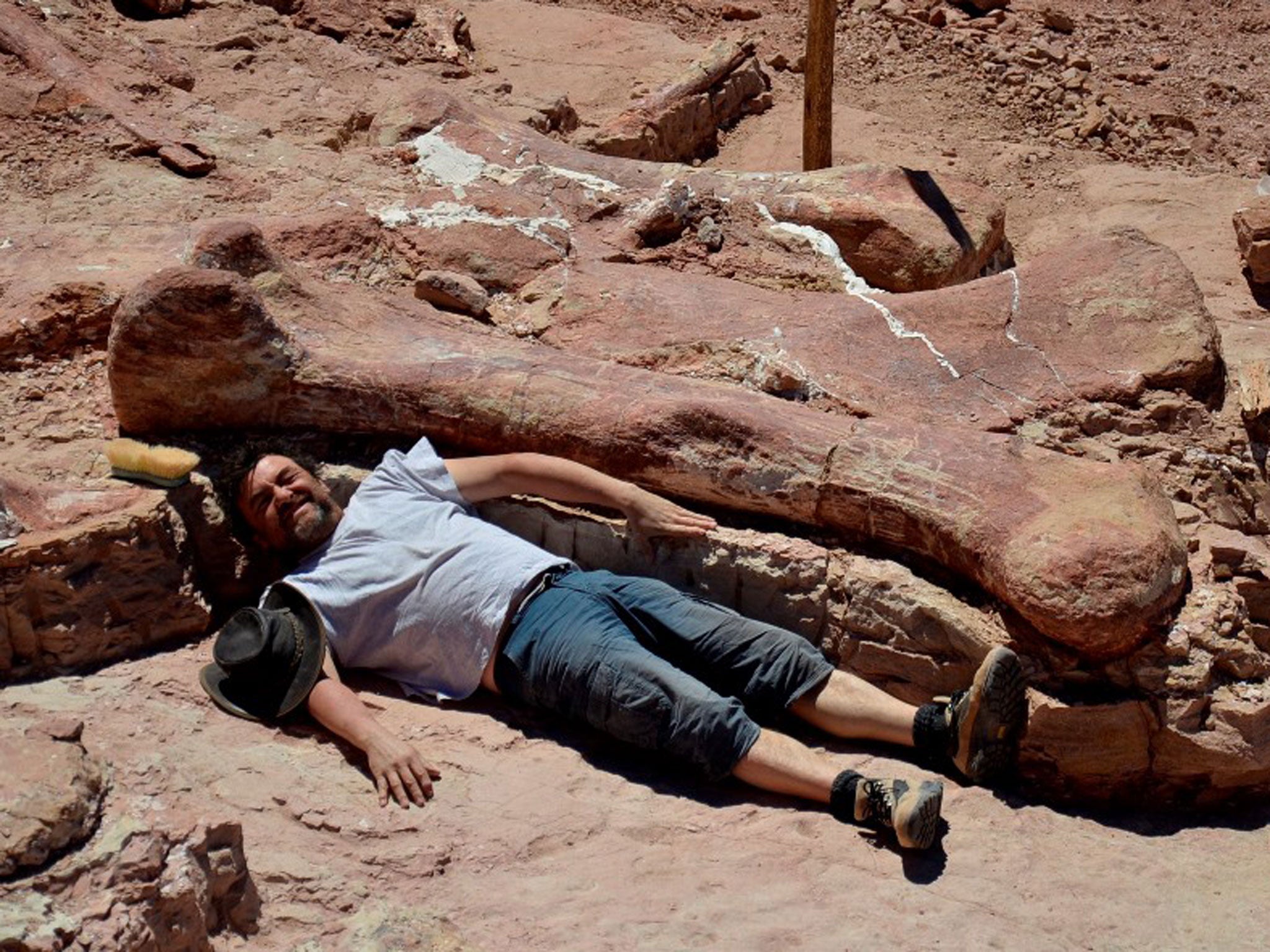Titanosaur: 'World's largest dinosaur' found in Patagonia
Scientists have unearthed more than 200 bones of animals that could have weighed 77 tons

A compelling new candidate for the title of "world's biggest dinosaur" – which stood as tall as a seven-storey building and was the length of three London buses – has been unearthed in Argentina in a discovery that could revolutionise our understanding of the largest animals ever to walk the Earth.
Scientists have found more than 200 bones from seven dinosaurs of the new species at a single site near La Flecha in Patagonia. Together, the bones make up a near-complete skeleton – except for the head and parts of the neck and tail.
The as-yet unnamed creature, referred to simply as the Giant by the researchers, is estimated to have been about 20m tall, 40m long and 77 tons in weight, about the same as 14 African elephants. It was from a family of sauropod dinosaurs known as the titanosaurs and lived about 95 million years ago.
The current official holder of the heavyweight title, Argentinosaurus, is thought to have weighed about 70 tons. While there have been claims that some dinosaurs could have been up to 220 tons, these estimates remain controversial as they are based on a small number of bones.
The discovery in Patagonia, where work is ongoing to find the head and other missing bones, is particularly significant because of the large number of bones and the high degree of preservation of their features.
Dr Diego Pol of the Egidio Feruglio Paleontology Museum, one of the scientists leading the excavation in southern Argentina, said: "This is an important finding because up to now we knew the existence of really giant dinosaurs – there are a few species similar to this animal in size – but they were known from only a few bones."
He said further work would be done on the bones, such as looking at the points at which muscles were attached, to build up a picture of its "biomechanics". "These studies are necessary to see whether they were able to run or not, to stay on their hind legs to reach for really high leaves in the trees – all these are the questions and answers that help us understand these animals as biological, living organisms," he said.
The initial discovery was made by a farm worker a few years ago. The scientists plan to publish a paper on their work in the next few months.
Dr Neil Clark, curator of palaeontology at the Hunterian Museum in Glasgow, pointed to rival candidates for the "biggest dinosaur" title such as amphicoelias, which was discovered in Colorado in the 1870s and could have been up to 120 tons, and bruhathkayosaurus, found in India in the 1980s and which could have been 220 tons. However, he said these estimates were based on a small number of bones.
Professor Jack Horner of Montana State University, who advised on the Jurassic Park films and was the basis for the character portrayed by Sam Neill, said it was "exciting to me every time we find a dinosaur". But he dismissed suggestions that it was the "biggest" dinosaur. "It's like a fish story [by an angler], it really is," he said. "The science will come after, when they start studying the thing."
The seven dinosaurs were found together in the same spot, possibly because it was one of the last remaining waterholes during a drought.
Join our commenting forum
Join thought-provoking conversations, follow other Independent readers and see their replies
Comments
Bookmark popover
Removed from bookmarks